Sometime around WW1 Brown & Sharpe introduced the No. 11 micrometer. At that time it wasn’t called the No. 11. It was called the “Rex”.
The only Rex in my collection is so horrid looking that I have to include some catalog pages. Besides, there are 3 different frame variations.
Below is a catalog page from 1920.
Next is from 1929. Notice the area around the anvil has been slimmed down and there’s no lock screw. That’s because this later model has an adjustable thimble ( patent number 1,629,406 )
Notice also that the mic is marked 11 instead of Rex.
Here’s my only Rex.
It too has the adjustable thimble but this is probably a replacement since its also equipped with the adjustable anvil. Notice also the thimble has been finished in hard chrome or “dull chrome” as it was originally called. It makes the mic easier to read and better resists scratches and rust than plain steel. This finish, also applied to the barrel has been polished off the end cap. The other markings on the frame read “Pat Pending” and “2d Quality”.
I don’t know exactly when, but between 1929 and 1935 the frame of the No. 11 was changed.
(below).
Both mics pictured are missing the original black enamel finish on their frames. I repainted one using auto touch up paint in a spray can. (above) It seems to be the most durable of all spray paints available to the general consumer. I’ve purchased spray cans of so called industrial enamels at Home Despot and found them to be no better than standard spray enamels.
Both originally had ratchet stops but one is missing . It looks like it was torn off and then the jagged edges hammered down. (below) What a thing to do to a precision tool.
When the spindles are drawn all the way out another more important difference becomes apparent. Inside the barrel of the mic is a partially split nut through which the spindle passes. Over time play will develop between this nut and the spindle and accuracy is affected.
Another nut
, screwed onto the slotted section of the barrel nut will take up this play . Originally the whole arrangement was held in by friction but around 1941 it was changed with the addition of another nut to lock everything in place. (below)
In the early 1950’s Brown & Sharpe began to manufacture micrometers with larger thimbles and dull chrome finish. Here’s a No. 11 made in the mid 50’s. (below) It probably didn’t see much use and is in excellent condition.
Notice every graduation on the thimble is numbered as opposed to every 5th graduation like on the earlier made mics. Also
, the frame is painted in wrinkle finish enamel, not smooth.
The barrel nut arrangement was improved upon again. This included simplifying things so that one nut could lock the barrel nut and adjust for wear. (below)
The model 11 probably remained in production until 1962 when Brown & Sharpe trimmed their line of mics down to 4 basic models.

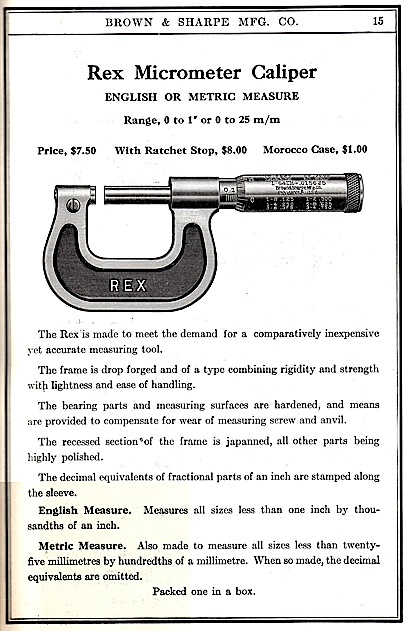
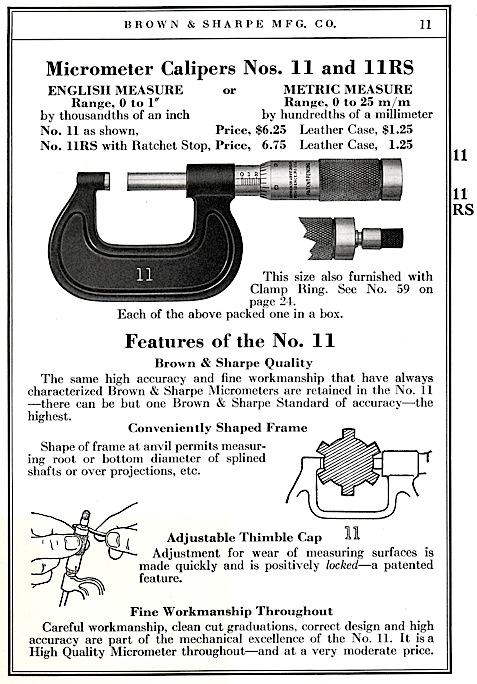
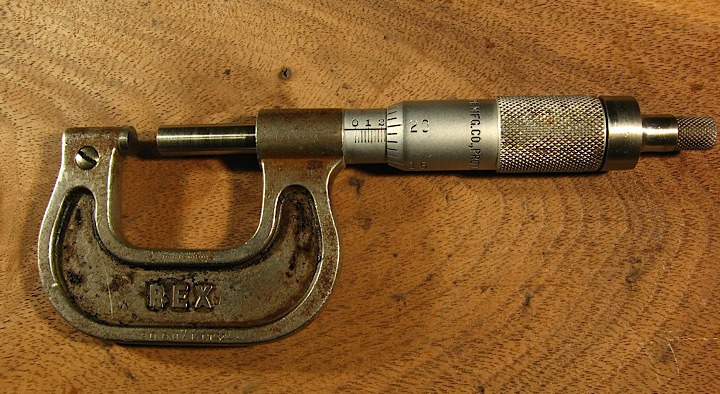
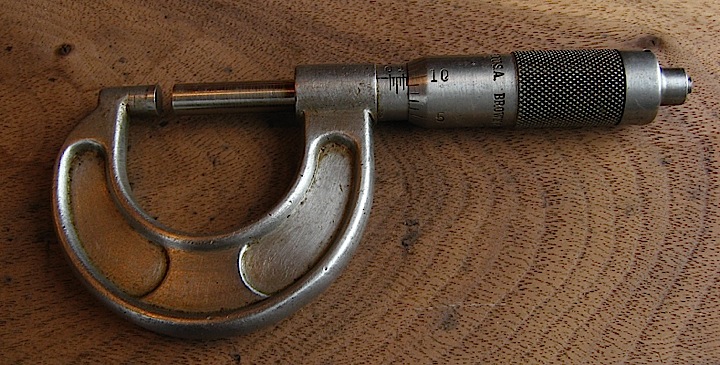
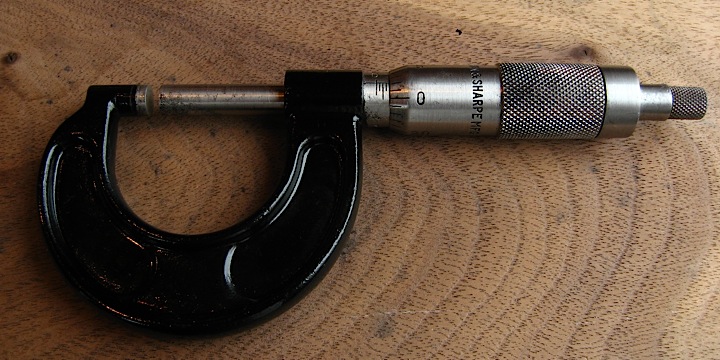
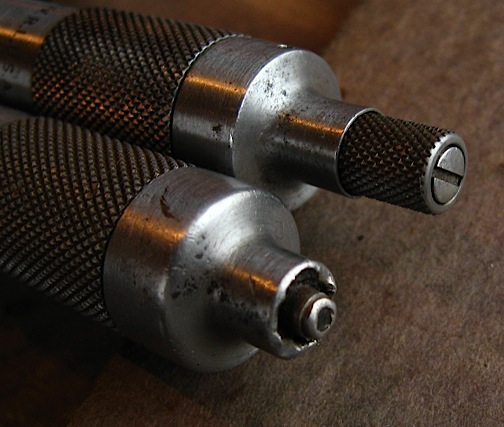

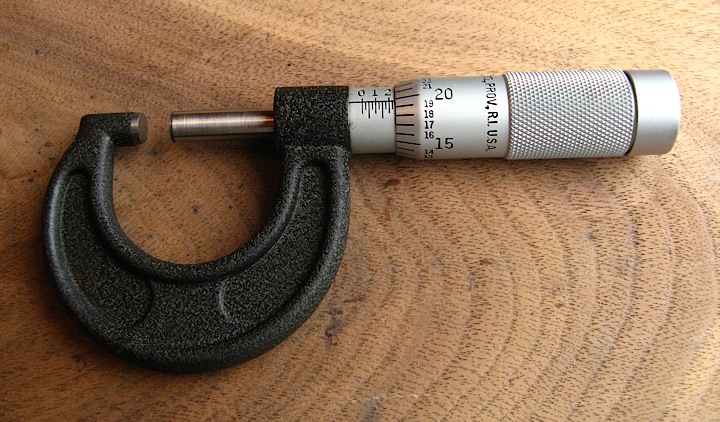
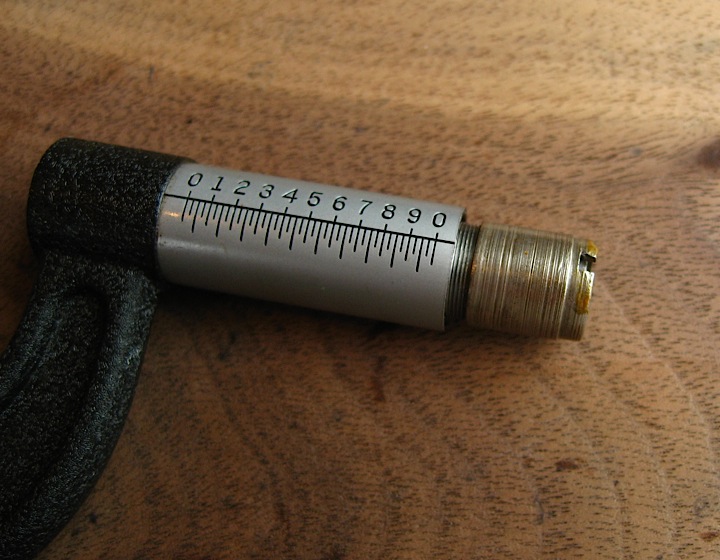
January 31st, 2009 - 10:45 am
Interesting, I did not know about the utilitarian aspect of a “dull chrome finish.” Of course, it makes number easier to read when there’s no stupid twinkly glare in your eyes. It reminds me of Apple’s recent decision to nix matt display screens from their line of laptops. They threw function to the winds and went with trendy slick. Sure the screens look “cool” when they are all shiny, but when your actually trying to get work done that shiny glare is a distraction. So now photographers, and designer’s traditionally Apple’s bread and butter customers have to figure out how best to cut the glare of their screens down without losing sharpness. Sorry to talk computer’s on this blog, but I think it really is related. Sometimes the “wisdom of the crowd” is dumb. Instead of having an arsenal of quality tools, we now have landfills of cheap crap.
May 13th, 2009 - 3:40 pm
I have a no 11 rex in about the same condition as the photo in the catalog. The only difference is that mine says pending on the body on the raised edge of the “C”. It also has intials “J and J Co” scribed into the “C” body.
Does it have any value?
May 13th, 2009 - 3:44 pm
The Rex No 11 I have is the one in the 1920’s catalog.
May 13th, 2009 - 4:35 pm
Allan,
monetarily there is a wide range of value . I’ve seen model 11’s sell for 50 cents or 30 dollars. You determine its value as a historical object by deciding what makes something important to you. How many or few were produced, when, for what purpose, cultural significance etc.